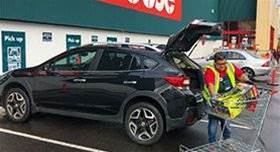Bunnings Warehouse says its ‘drive & collect’ contactless pickup service launched during the pandemic is “here to stay” to cater to the changed expectations of customers.

Drive & collect is a drive-through styled pickup option for customers that place orders online.
Director of digital and analytics Leah Balter told the Melbourne Business School’s business analytics conference that data and agile ways of working had already led to optimisations of the ‘drive & collect’ offering.
Both data and agile would also remain central to the evolution of Bunnings’ ongoing business strategy.
“We had to design a whole new model for customers to shop in anticipation that stores might be closed,” Balter said.
“We collaborated across teams to design the ‘drive & collect’ model in three days, rolled it out to three stores in five days and trained 46,000 team [members] in the model in three weeks to get it out in time before the first lockdown.
“The ‘drive & collect’ program initially took two days to get an order, but … data really helped our team and store be informed in terms of the orders as they were coming in, and helped our merchandise team get supply and demand [right] - what essential items were people looking for during this time, and to get the right stock into the right location.
“We couldnt have gone through last year without the underlying data and the agile ways of working across the team to pivot and move really quickly.”
Balter said the past year had improved internal appreciation of the importance of data analytics, and of the team and technology that sits behind the retailer’s efforts.
“Last year we couldnt have done it without the amazing team that we’ve got in, and we’re still looking for a whole lot more,” she said.
“I think the rest of the business got a whole newfound appreciation for the data and analytics team and what they can do, and … [for] building the underlying platform for them as well to work off.”
Balter said that the retailer introduced some analytics self-service capabilities for internal teams, particularly supply chain.
“Supply chain has been really important over the past year in terms of getting the right products into the stores where customers wanted them,” she said.
“For us it was about [the data and analytics team] not being effectively the nerve centre for that .... but actually upskilling the supply chain team and working with them in partnership.
“So we moved to a self-service model which I think was really key for the supply chain team over the last year in particular.”










 iTnews Executive Retreat - Security Leaders Edition
iTnews Executive Retreat - Security Leaders Edition












_(1).jpg&h=140&w=231&c=1&s=0)



